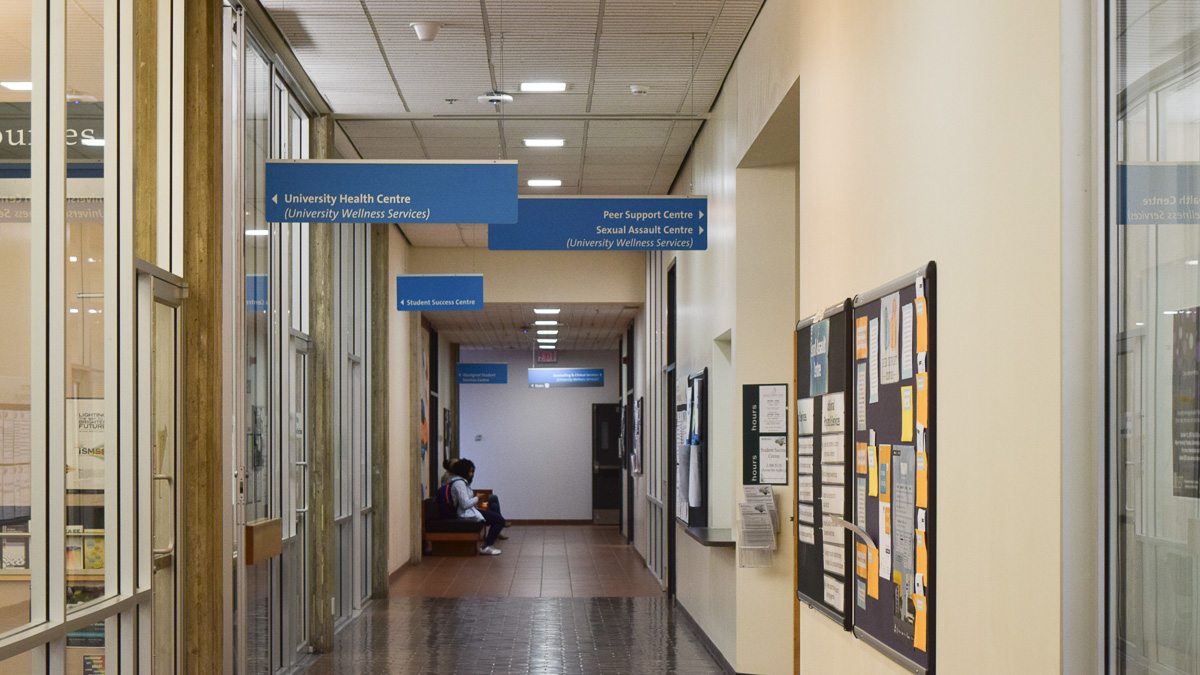Student advocates say mental health funding is not equitable
 Chantal Yoon
Chantal YoonThe University of Alberta is getting $27 per student in mental health funding each year for the next three years, however the Students’ Union was hoping for closer to $40.
When it was announced last Monday that the U of A will be receiving of $1 million a year for the next three years for mental health funding, reaction from past and present student leaders was mixed. While the funding commitment was welcomed, some are disappointed that more money isn’t going to U of A students, especially considering how the government promised a per-student system of distribution.
“We’re glad we got funding, we’re just very confused about how the numbers came out the way they did,” said Vivian Kwan, who was the Students’ Union vice-president (student life) in 2015-2016.
In July, the Government of Alberta committed $25.8 million in mental health funding for the next three years, of which $8.9 million is to be spent this year. In the past, mental health funding was renewed year by year, and the distribution of funds was not reflective of the size of the institution that received the funding. Because of this, the initial announcement was largely seen as a win for students.
Equitable Distribution
Three universities in Alberta are receiving $1 million per year in funding: U of A, the University of Calgary, and the University of Lethbridge, which only has about 8,500 students. However, since U of A is the largest institution in the province with over 37,000 students, that money comes down to about $27 per student.
While it’s hard to say how this funding arrangement might impact students, Kwan said that this could result in more students being referred to off-campus services provided by Alberta Health Services, which might mean longer wait times of up to eight to 10 months.
Students’ Union president Marina Banister said that with the way the money is distributed, some schools are getting upwards of $100 per head, while others are getting about $20.
According to the Council of Alberta University Students, the University of Lethbridge is getting the most amount of money per student with about $144 per head while Athabasca University is only getting about $25. Some other per-student amounts are as follows:
- Concordia University of Edmonton: $62.77
- Lethbridge College: $57.57
- NorQuest College: $52.86
- University of Calgary: $36.38
- NAIT: $35.85
- Mount Royal: $30.22
- MacEwan University: $28.62
“In a perfect world we would like to see our level of funding to be upwards of $40 instead,” Banister said.
However, Minister of Advanced Education Marlin Schmidt said enrollment numbers weren’t the only consideration in determining the amount schools received, with factors like the proximity of existing community support being one consideration.
“Certainly students in Edmonton have a significant advantage over students in Slave Lake for example in being able to access other mental health resources in the community,” he said.
A Step Backwards?
Kwan said that since the U of A was getting around $1.2 million for mental health funding back in 2013, Monday’s announcement was almost a step backwards. She also warned that since the funding for the next three years is fixed, it doesn’t give a lot of room for services to expand to meet increased demand, or to adapt to different trends in care.
“We won’t have a lot of wiggle room in terms of what we can do because we are pretty much locked down,” Kwan said. “And taking inflation into account, things will have to be adjusted as well and we’re basically going backwards.”
As for the increasing demand for mental health services, Schmidt said it’s something the government is concerned about, and that the boost in province-wide funding from $3.6 million in the year before to $8.9 million this year reflects that concern.
“We recognize that the existing resources province-wide weren’t adequate, and we certainly heard loudly and clearly from students that more needed to be done,” he said.”That’s why we almost tripled the amount of funding in student mental health resources.”
Keeping services on campus
In addition to talking with the government about a more equitable funding model, Banister said there will need to be a conversation about keeping services on campus as opposed to using community supports provided by Alberta Health Services.
“We believe that students are best served if those services existed on campus where they will be more readily available,” she said. “We can also have a stronger guarantee that those services will either be free or affordable for students if they’re on campus.”
According to a press release from the Students’ Union, wait times for provincially-funded mental health services can reach up to a year, while private practice psychologists typically bill $190 per hour of treatment.
When asked about moving services off campus, Schmidt said the discussion has not reached that point yet.
As for the Students’ Union, Banister said that they plan on continuing to meet with members of government about the issue.
“The most important thing to us is that it’s an equitable model, so we would like to see the funding reflective of how many students that institution serves, as well as we really want to see all the services remain on campus,” she said.





FYI, Athabasca University has over 40,000 students, so the stats reported here are not correct, in that UofA is not the largest institution in the province. Athabasca University is actually only getting approximately $5 per student.